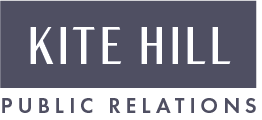About a month ago, I ran my first marathon; achieving a personal goal that I recently set for myself. Running has boosted my stamina and helped me maintain an overall healthier lifestyle. But my recent experience in training and preparing for this 26.2 mile run also gave me an unintended, and significant side benefit: It made me a better leader and a more focused and more confident professional.
It also clarified for me just how much the process of pursuing a personal passion can help anyone grow tremendously as a professional, and reap lots of benefits for everyone around them. The qualities that make us great professionals are not gained only on the job. So many of the things that make us better at our jobs can come from accomplishments outside of the workplace.
Here’s how that’s worked out for me.
It’s demonstrated the power of a network: Running has been a lifelong hobby and just that. At the beginning of 2021, I joined a local running group. What had always been a solo activity turned into a powerful support network that helped me to feel more confident in my abilities as well as increased my passion for the sport.
It’s made me more confident: The confidence I gained through this group and my growing skills as a runner has transferred to my professional life. Confidence can be a bit elusive and intangible, but I think it - or a lack of it - underpins a lot of what can hold people back professionally. For example, imposter syndrome, anxiety, indecisiveness, and a lack of focus, determination and motivation can all hold us back from performing our best.
It’s a reminder that achieving big goals is possible: A goal is just a wish until you write it down and commit to it. Creating a goal around the thing I love doing and succeeding at it has been incredibly rewarding. When there are professional setbacks, the race is something to positively reflect on. I know that I am capable, strong and resilient. That’s true of goal-setting in the workplace.
Personal passions can offer great stress relief or ways to sort out problems: I do some of my best thinking when I’m out on a long run. Also, it’s a great de-stressor, which benefits my family, my co-workers and my clients.
Don’t ignore your passions work hard at them. You might be surprised at the hidden benefits you uncover.
Gina Preoteasa, Senior Vice President




